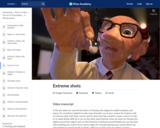
Introduction to extreme shots and angles.
- Subject:
- Applied Science
- Arts and Humanities
- Computer Science
- Graphic Arts
- Material Type:
- Lesson
- Provider:
- Khan Academy
- Provider Set:
- Pixar
- Author:
- Disney Pixar
- Khan Academy
- Date Added:
- 07/15/2021

Introduction to extreme shots and angles.
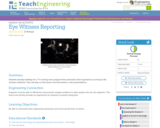
In this activity, the students will develop a briefing for a T.V. evening news program that summarizes their experiences surviving in the Amazon rainforest. The students will have the opportunity to role play as interviewer and interviewee in presentations to the class.

In 2016, Oxford Dictionaries chose "post-truth" as the word of the year. As literacy has shifted from published hardcopy to an online landscape, it is more important than ever to engage and empower students in navigating the complicated battleground of fake news versus responsible, fact-based news. In this multi-day lesson, students will 1) examine terms associated with “fake news” and evaluate sources for their reliability and authenticity, and 2) develop a set of norms for responsible use of online news sources that spans academic and personal interaction with media.
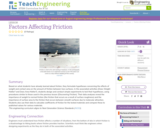
Based on what they have already learned about friction, students formulate hypotheses concerning the effects of weight and contact area on the amount of friction between two surfaces. In the Associated Activities (Does Weight Matter? and Does Area Matter?), students design and conduct simple experiments to test their hypotheses, using procedures similar to those used in the previous lesson (Discovering Friction). An analysis of their data will reveal the importance of weight to normal friction (the friction that occurs as a result of surface roughness) and the importance of surface area to the friction that occurs between smooth surfaces due to molecular attraction. Based on their data, students will also be able to calculate coefficients of friction for the materials tested, and compare these to published values for various materials.
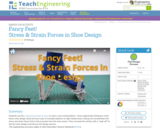
Students use the engineering design process to solve a real-world problem shoe engineering! Working in small teams, they design, build and test a pair of wearable platform or high-heeled shoes, taking into consideration the stress and strain forces that it will encounter from the shoe wearer. They conclude the activity with a "walk-off" to test the shoe designs and discuss the design process.

Students learn about fossils what they are, how they are formed, and why scientists and engineers care about them.

In this video from Common Ground and Cleaner Water, Tribby Vice, a Kentucky farmer, talks about the changes he has made on his farm to protect the water quality of the stream running through his property and the watershed in which he lives.
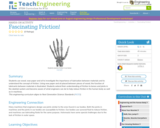
Students use wood, wax paper and oil to investigate the importance of lubrication between materials and to understand the concept of friction. Using wax paper and oil placed between pieces of wood, the function of lubricants between materials is illustrated. Students extend their understanding of friction to bones and joints in the skeletal system and become aware of what engineers can do to help reduce friction in the human body as well as in machines.

In this video segment adapted from NOVA scienceNOW, scientists in western Greenland explain how a glacier there is shrinking and moving faster due to increased melting.
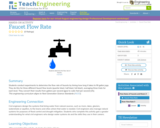
Students conduct experiments to determine the flow rate of faucets by timing how long it takes to fill gallon jugs. They do this for three different faucet flow levels (quarter blast, half blast, full blast), averaging three trials for each level. They convert their results from gallons per second (gps) to cubic feet per second (cfs).
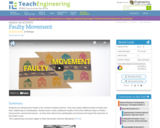
In this activity, students are introduced to faults. They will learn about different kinds of faults and understand their relationship to earthquakes. The students will build cardboard models of the three different types of faults as they learn about how earthquakes are formed.
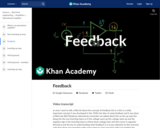
Feedback is the design technique where a part of the amplifier output "feeds back" to the input of the amplifier. The overall effect creates a very stable gain determined by resistor ratios. Created by Willy McAllister.
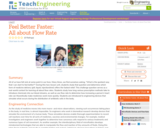
All of us have felt sick at some point in our lives. Many times, we find ourselves asking, "What is the quickest way that I can start to feel better?" During this two-lesson unit, students study that question and determine which form of medicine delivery (pill, liquid, injection/shot) offers the fastest relief. This challenge question serves as a real-world context for learning all about flow rates. Students study how long various prescription methods take to introduce chemicals into our blood streams, as well as use flow rate to determine how increasing a person's heart rate can theoretically make medicines work more quickly. Students are introduced to engineering devices that simulate what occurs during the distribution of antibiotic cells in the body.
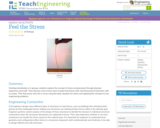
Working individually or in groups, students explore the concept of stress (compression) through physical experience and math. They discover why it hurts more to poke themselves with mechanical pencil lead than with an eraser. Then they prove why this is so by using the basic equation for stress and applying the concepts to real engineering problems.
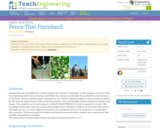
Students develop and solidify their understanding of the concept of "perimeter" as they engage in a portion of the civil engineering task of land surveying. Specifically, they measure and calculate the perimeter of a fenced in area of "farmland," and see that this length is equivalent to the minimum required length of a fence to enclose it. Doing this for variously shaped areas confirms that the perimeter is the minimal length of fence required to enclose those shapes. Then students use the technology of a LEGO MINDSTORMS(TM) NXT robot to automate this task. After measuring the perimeter (and thus required fence length) of the "farmland," students see the NXT robot travel around this length, just as a surveyor might travel around an area during the course of surveying land or measuring for fence materials. While practicing their problem solving and measurement skills, students learn and reinforce their scientific and geometric vocabulary.
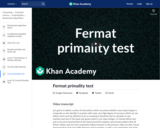
A quick outline of how & why it works. Created by Brit Cruise.
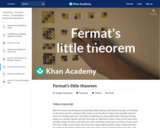
Introduction to a key result in elementary number theory using a visualization with beads. Created by Brit Cruise.
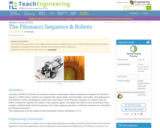
Using the LEGO® NXT robotics kit, students construct and program robots to illustrate and explore the Fibonacci sequence. Within teams, students are assigned roles: group leader, chassis builder, arm builder, chief programmer, and Fibonacci verifier. By designing a robot that moves based on the Fibonacci sequence of numbers, they can better visualize how quickly the numbers in the sequence grow. To program the robot to move according to these numbers, students break down the sequence into simple algebraic equations so that the computer can understand the Fibonacci sequence.
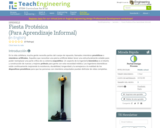
Los estudiantes diseñan, construyen y prueban piernas prostéticas.
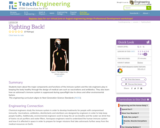
This lesson describes the major components and functions of the immune system and the role of engineers in keeping the body healthy (e.g., vaccinations and antibiotics, among other things). This lesson also discusses how an astronaut's immune system is suppressed during spaceflight due to stress and other environmental factors.